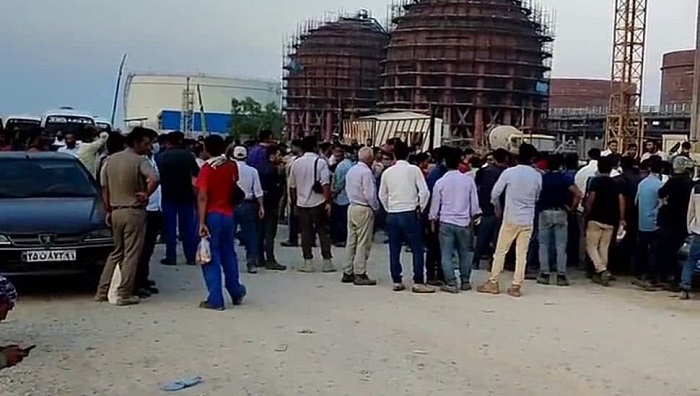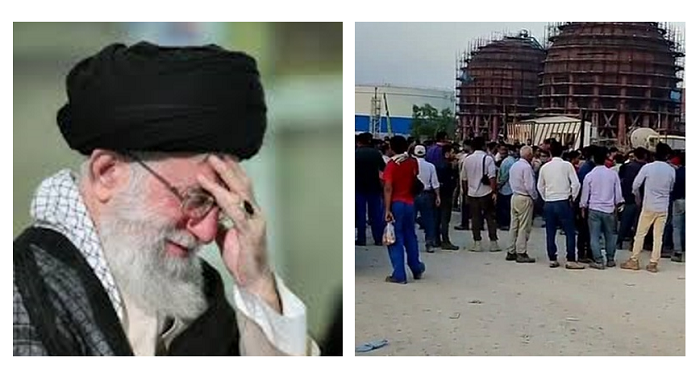
Strikes and protests by oil and petrochemical workers have been expanding across Iran recently. These workers demand their basic rights, such as a salary in accordance with Iran’s skyrocketing inflation. Instead of addressing their problem, Iranian authorities have fired thousands of workers. According to state-run Etemad Daily, eight petrochemical projects have been struck by numerous seasonal workers who are protesting their dire livelihood circumstances.
Approximately 4,000 workers will be replaced by new recruits.Yet, according to the paper’s reporter, the actual number of protesting workers is suspected to be as high as 10,000 individuals. These protests are predominantly being carried out by contract workers within the oil industry, including welders, rebar makers, mold makers, painters, insulation workers, and scaffolders.
NCRI statement:
Iran: Workers in Oil and Petrochemical Industry Launch a Massive Strike Across Various Cities#IranRevolutionhttps://t.co/MmYoIlDjfD— NCRI-FAC (@iran_policy) April 23, 2023
Iranian workers have been struggling to have their rightful share of one of the world’s richest nations, to no avail. Their situation has worsened in recent years due to Iran’s unprecedented financial calamity.
Earlier this year, and despite much fanfare from the Iranian regime regarding a 27% salary increase for workers at the start of the Persian New Year in March, it was deemed ineffective given the country’s skyrocketing inflation. Authorities have failed to honour their own promises.
He complained about “the accumulated wealth by some individuals” and declined to explain why his regime’s authorities deprive workers of their rights, fire them when they protest, and arrest activists.

Although reaching its height in recent years, the Iranian labor movement has strong historical roots. The syndicate of workers and other trade unions began shortly after 1917, influenced by Russia’s October Revolution. These activities continued for a while as Iran was amid a power transition, and the Qajar Dynasty was at its weakest point.
Iran’s labor movement reached its height in 1950, with oil workers staging their first strike, paving the way for the country’s oil industry to be nationalized under the leadership of Prime Minister Dr. Mohammad Mosaddeq. Iranian workers, mainly oil workers, played a key role during the 1979 anti-monarchial revolution.
May 1 – Shush, southwest #Iran
Retired workers are marching and protesting the regime's corruption and violation of their rights.
"Neither the Majlis (parliament) nor the government care about the people!"#InternationalWorkersDay #MayDay2023 pic.twitter.com/fkoenbKJHh— People's Mojahedin Organization of Iran (PMOI/MEK) (@Mojahedineng) May 1, 2023
After usurping power, the ruling regime rapidly transformed into one of the world’s worst violators of workers’ rights. Many Iranian workers are detained, flogged, or imprisoned for their protests or simply for participating in the labor movement.As Iranian workers continue their struggle for basic rights, international organizations and human rights activists have called for greater attention and support for their cause.
 MEK Iran (follow us on Twitter and Facebook), Maryam Rajavi’s on her site, Twitter & Facebook, NCRI (Twitter & Facebook), and People’s Mojahedin Organization of Iran – MEK IRAN – YouTu
MEK Iran (follow us on Twitter and Facebook), Maryam Rajavi’s on her site, Twitter & Facebook, NCRI (Twitter & Facebook), and People’s Mojahedin Organization of Iran – MEK IRAN – YouTu







